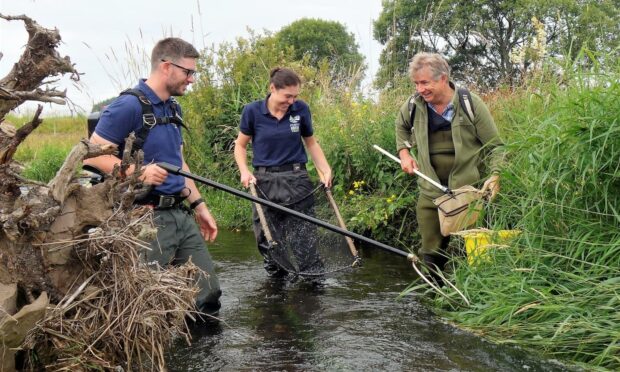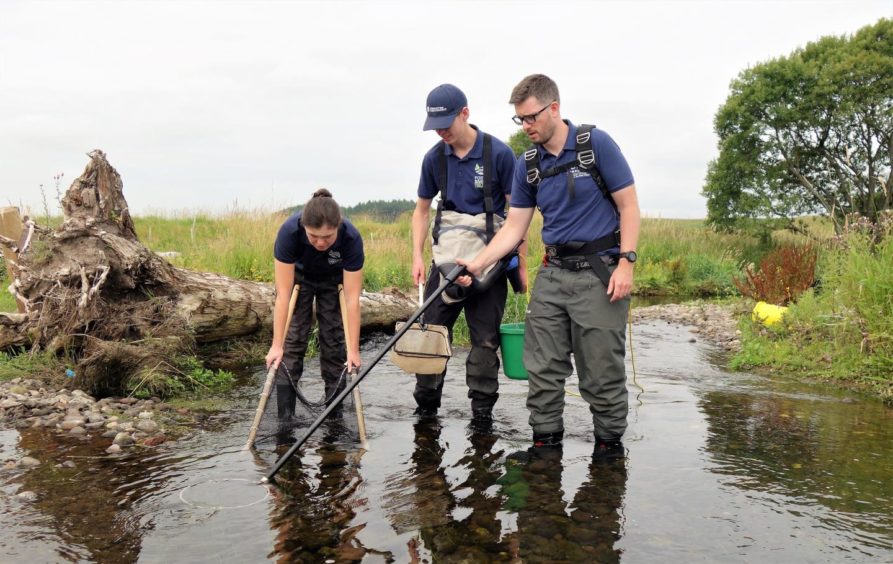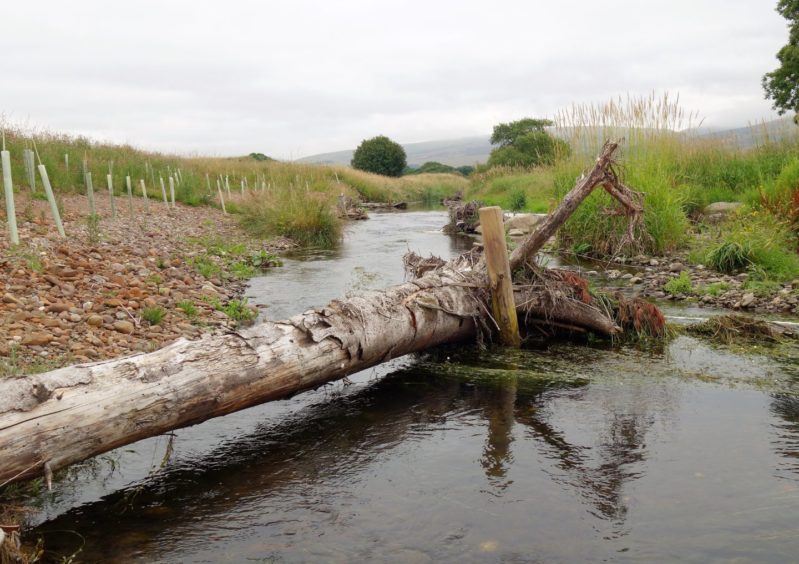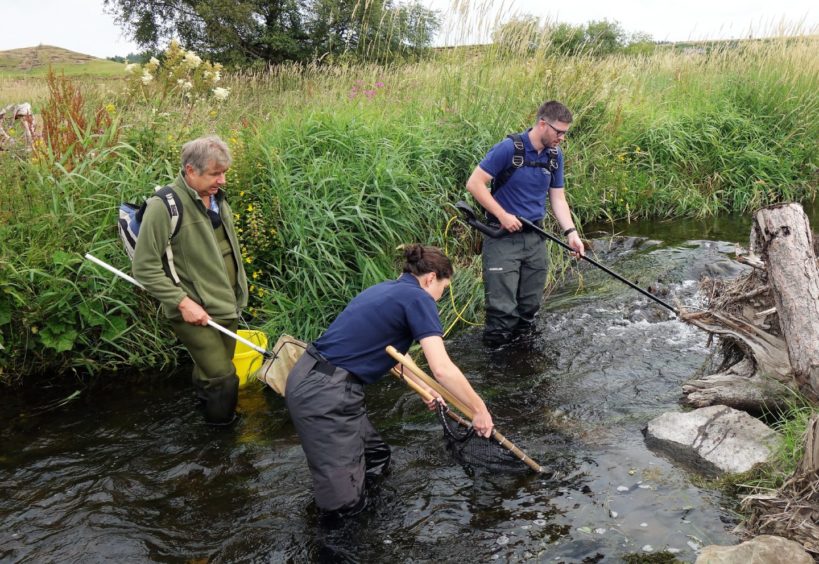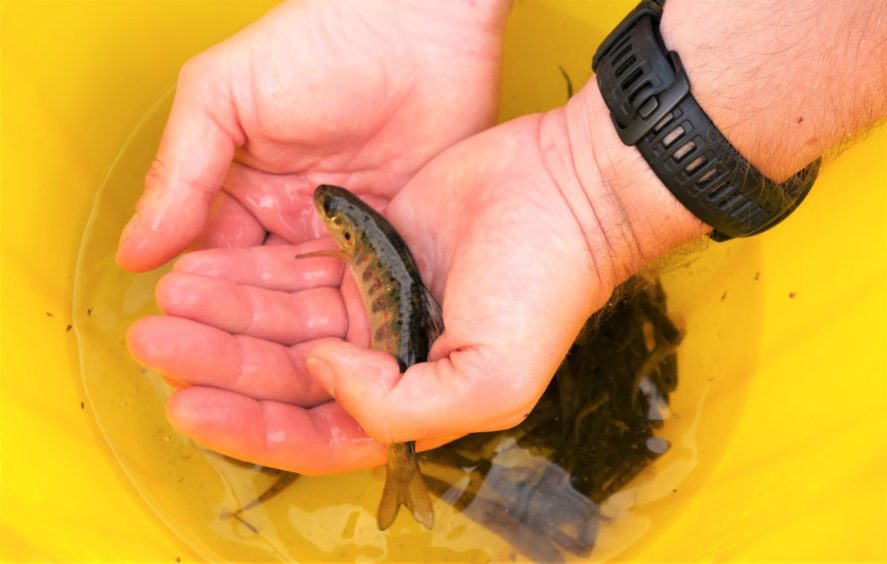I was in a natural paradise that lifted the spirits in a way only rivers can, with gurgling clear water and the banksides brimming with wildflowers, including water mint and water forget-me-not.
At the invitation of Gary Brown, Jacquelyn Johnson and Niall Provan of the Forth Rivers Trust (FRT), I was on a section of the upper Allan Water near Blackford in southern Perthshire, who were keen to show me initial results from an innovative project to help restore the fortunes of this delightful river.
The Revive the Allan Project aims to improve habitat along the upper reaches of the river through a variety of natural solutions, including creating wetlands, removing steep embankments, installing woody debris, and planting trees to encourage the river to adopt a more natural flow.
As we walked along the bankside, Gary pointed out some of the remedial action that had taken place.
Steep banksides which previously constrained the natural reach of the river had been re-profiled to much gentler slopes and planted with a range of native species including bird cherry, aspen and willow.
The newly planted trees will prevent bank erosion and offer shelter for insects and other invertebrates, which in turn will provide food for fish.
Restorative work
Much of the area around is denuded of trees, so a significant element of the restorative work has involved the installation of woody debris, in particular felled tree trunks placed at angles into the river, which slows the water flow and collects sediment and other detritus.
This has transformed a previously undynamic reach of the river into one with a diverse range of runs, backwaters and pools.
The gravel beds have cleared of silt in areas where the water flow is fast, providing perfect conditions for spawning trout and salmon, while the sediment collected in the slower moving areas is beneficial to lampreys and an array of invertebrates.
“It is all about using natural processes for the overall benefit of the river and the surrounding landscape,” explained Gary.
This first stage of work was completed last year and already the results are bearing fruit in remarkable fashion, with the numbers of juvenile trout and salmon in the river having soared.
Gary concedes it is too early to determine whether this is as a direct consequence of the remedial action, but he is confident that the monitoring of salmon and trout populations in future years will prove this to be the case.
Astonishing results
As part of this monitoring, I helped the FRT team electro-fish a small section of the river (a process that catches fish but does not harm them), and the results were astonishing with well over 100 juvenile trout and salmon caught.
In previous years, only a handful would have been trapped in the same area.
Encouraging the upper river to return to its natural form is delivering a priceless dividend that benefits both humanity and the wider environment by reducing the risk of flooding and providing a place where wildlife can flourish.
INFO
The Revive the Allan Project is funded by NatureScot’s Biodiversity Challenge Fund, and supports the wider Allan Water Improvement Project managed by the Forth Rivers Trust and funded by the Scottish Government with support from others.
